This article needs additional citations for verification. (May 2016) (Learn how and when to remove this template message) |
| Ramayana | |
|---|---|
 Rama with his wife Sita and brother Lakshmana during exile in forest, manuscript, ca. 1780 | |
| Information | |
| Religion | Hinduism |
| Author | Valmiki |
| Language | Sanskrit |
| Verses | 24,000 |
Ramayana (/r???m??j?n?/; Sanskrit: ????????, R?m?ya?am ) is an ancient Indian epic poem which narrates the struggle of the divine prince Rama to rescue his wife Sita from the demon king Ravana. Along with the Mahabharata, it forms the Hindu Itihasa.
The epic, traditionally ascribed to the Hindu sage Valmiki, narrates the life of Rama, the legendary prince of the Kosala Kingdom. It follows his fourteen-year exile to the forest from the kingdom, by his father King Dasharatha, on request of his second wife Kaikeyi. His travels across forests in India with his wife Sita and brother Lakshmana, the kidnapping of his wife by Ravana, the demon king of Lanka, resulting in a war with him, and Rama's eventual return to Ayodhya to be crowned king.
There have been many attempts to unravel the epic's historical growth and compositional layers; various recent scholars' estimates for the earliest stage of the text range from the 7th to 4th centuries BCE, with later stages extending up to the 3rd century CE.
The Ramayana is one of the largest ancient epics in world literature. It consists of nearly 24,000 verses (mostly set in the Shloka meter), divided into seven Kandas (books) and about 500 sargas (chapters). In Hindu tradition, it is considered to be the adi-kavya (first poem). It depicts the duties of relationships, portraying ideal characters like the ideal father, the ideal servant, the ideal brother, the ideal wife and the ideal king. Ramayana was an important influence on later Sanskrit poetry and Hindu life and culture. Like Mahabharata, Ramayana is not just a story: it presents the teachings of ancient Hindu sages in narrative allegory, interspersing philosophical and ethical elements. The characters Rama, Sita, Lakshmana, Bharata, Hanuman, Shatrughna, and Ravana are all fundamental to the cultural consciousness of India, Nepal, Sri Lanka and south-east Asian countries such as Thailand, Cambodia, Malaysia and Indonesia.
There are many versions of Ramayana in Indian languages, besides Buddhist, Sikh and Jain adaptations. There are also Cambodian, Indonesian, Filipino, Thai, Lao, Burmese and Malaysian versions of the tale.
Contents
Etymology
The name Ramayana is a tatpuru?a compound of the name R?ma.
Textual history and structure
According to Hindu tradition, and the Ramayana itself, the epic belongs to the genre of itihasa like Mahabharata. The definition of itih?sa is a narrative of past events (pur?v?tta) which includes teachings on the goals of human life. According to Hindu tradition, Ramayana takes place during a period of time known as Treta Yuga.
In its extant form, Valmiki's Ramayana is an epic poem of some 24,000 verses. The text survives in several thousand partial and complete manuscripts, the oldest of which is a palm-leaf manuscript found in Nepal and dated to the 11th century CE. A Times of India report dated 18 December 2015 informs about the discovery of a 6th-century manuscript of the Ramayana at the Asiatic Society library, Kolkata. The Ramayana text has several regional renderings, recensions and sub recensions. Textual scholar Robert P. Goldman differentiates two major regional revisions: the northern (n) and the southern (s). Scholar Romesh Chunder Dutt writes that "the Ramayana, like the Mahabharata, is a growth of centuries, but the main story is more distinctly the creation of one mind."
There has been discussion as to whether the first and the last volumes (bala kandam and uttara kandam) of Valmiki's Ramayana were composed by the original author. Most Hindus still believe they are integral parts of the book, in spite of some style differences and narrative contradictions between these two volumes and the rest of the book.
Retellings include Kamban's Ramavataram in Tamil (c. 11th–12th century), Gona Budda Reddy's Ramayanam in Telugu (c. 13th century), Madhava Kandali's Saptakanda Ramayana in Assamese (c. 14th century), Krittibas Ojha's Krittivasi Ramayan (also known as Shri Rama Panchali) in Bengali (c. 15th century), Sarala Das' Vilanka Ramayana (c. 15th century) and Balaram Das' Dandi Ramayana (also known as the Jagamohan Ramayana) (c. 16th century) both in Odia, sant Eknath's Bhavarth Ramayan (c. 16th century) in Marathi, Tulsidas' Ramcharitamanas (c. 16th century) in Awadhi (which is an eastern form of Hindi) and Thunchaththu Ezhuthachan's Adhyathmaramayanam in Malayalam.
Period
Some cultural evidence, such as the presence of sati in Mahabharata but not in the main body of Ramayana, suggests that Ramayana predates Mahabharata. However, the general cultural background of Ramayana is one of the post-urbanization periods of the eastern part of north India and Nepal, while Mahabharata reflects the Kuru areas west of this, from the Rigvedic to the late Vedic period.
By tradition, the text belongs to the Treta Yuga, second of the four eons (yuga) of Hindu chronology. Rama is said to have been born in the Treta yuga to king Dasharatha in the Ikshvaku dynasty.
The names of the characters (Rama, Sita, Dasharatha, Janaka, Vashista, Vishwamitra) are all known in late Vedic literature. However, nowhere in the surviving Vedic poetry is there a story similar to the Ramayana of Valmiki. According to the modern academic view, Vishnu, who, according to bala kanda, was incarnated as Rama, first came into prominence with the epics themselves and further, during the puranic period of the later 1st millennium CE. Also, in the epic Mahabharata, there is a version of Ramayana known as Ramopakhyana. This version is depicted as a narration to Yudhishthira.
Books two to six form the oldest portion of the epic, while the first and last books (Bala Kanda and Uttara Kanda, respectively) are later additions, as some style differences and narrative contradictions between these two volumes and the rest of the book. The author or authors of Bala Kanda and Ayodhya Kanda appear to be familiar with the eastern Gangetic basin region of northern India and with the Kosala, Mithila and Magadha regions during the period of the sixteen Mahajanapadas, based on the fact that the geographical and geopolitical data accords with what is known about the region.
Characters
Ikshvaku dynasty
- Dasharatha is king of Ayodhya and father of Rama. He has three queens, Kausalya, Kaikeyi and Sumitra, and three other sons: Bharata, and twins Lakshmana and Shatrughna. Kaikeyi, Dasharatha's favourite queen, forces him to make their son Bharata crown prince and send Rama into exile. Dasharatha dies heartbroken after Rama goes into exile.
- Rama is the main protagonist of the tale. Portrayed as the seventh avatar of god Vishnu, he is the eldest and favourite son of Dasharatha, the king of Ayodhya and his Chief Queen, Kausalya. He is portrayed as the epitome of virtue. Dasharatha is forced by Kaikeyi to command Rama to relinquish his right to the throne for fourteen years and go into exile. Rama kills the evil demon Ravana, who abducted his wife Sita, and later returns to Ayodhya to form an ideal state.
- Sita is another of the tale's protagonists. She is a daughter of Mother Earth, adopted by King Janaka, and Rama's beloved wife. Rama went to Mithila and got a chance to marry her by breaking the Shiv Dhanush (bow) while trying to tie a knot to it in a competition organized by King Janaka of Mithila in Dhanusa. The competition was to find the most suitable husband for Sita and many princes from different states competed to win her. Sita is the avatara of goddess Lakshmi, the consort of Vishnu. Sita is portrayed as the epitome of female purity and virtue. She follows her husband into exile and is abducted by the demon king Ravana. She is imprisoned on the island of Lanka, until Rama rescues her by defeating Ravana. Later, she gives birth to twin boys Luv and Kusha.
- Bharata is the son of Dasharatha and Queen Kaikeyi. When he learns that his mother Kaikeyi has forced Rama into exile and caused Dasharatha to die brokenhearted, he storms out of the palace and goes in search of Rama in the forest. When Rama refuses to return from his exile to assume the throne, Bharata obtains Rama's sandals and places them on the throne as a gesture that Rama is the true king. Bharata then rules Ayodhya as the regent of Rama for the next fourteen years, staying outside the city of Ayodhya. He was married to Mandavi.
- Lakshmana is a younger brother of Rama, who chose to go into exile with him. He is the son of King Dasharatha and Queen Sumitra and twin of Shatrughna. Lakshmana is portrayed as an avatar of Shesha, the n?ga associated with the god Vishnu. He spends his time protecting Sita and Rama, during which time he fights the demoness Surpanakha. He is forced to leave Sita, who was deceived by the demon Maricha into believing that Rama was in trouble. Sita is abducted by Ravana upon his leaving her. He was married to Sita's younger sister Urmila.
- Shatrughna is a son of Dasharatha and his second wife Queen Sumitra. He is the youngest brother of Rama and also the twin brother of Lakshmana. He was married to Shrutakirti.
Allies of Rama
- Vanara
- Hanuman is a vanara belonging to the kingdom of Kishkindha. He is an ideal bhakta of Rama. He is born as son of Kesari, a Vanara king in Sumeru region and the goddess Añjan?. He plays an important part in locating Sita and in the ensuing battle. He is believed to live until our modern world.
- Sugriva, a vanara king who helped Rama regain Sita from Ravana. He had an agreement with Rama through which Vali – Sugriva's brother and king of Kishkindha – would be killed by Rama in exchange for Sugriva's help in finding Sita. Sugriva ultimately ascends the throne of Kishkindha after the slaying of Vali and fulfills his promise by putting the Vanara forces at Rama's disposal.
- Angada is a vanara who helped Rama find his wife Sita and fight her abductor, Ravana, in Ramayana. He was son of Vali and Tara and nephew of Sugriva. Angada and Tara are instrumental in reconciling Rama and his brothe
Watch movie Ramayan online on Amazon
Watch movie Ramayan online
Watch The Movie On PrimeTaal Full HD Movie Download
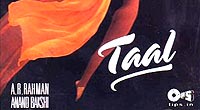
Chandi Sona Full HD Movie Download
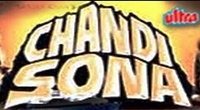
Lorie Full HD Movie Download
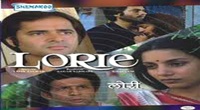
Qaid Mein Hai Bulbul Full HD Movie Download
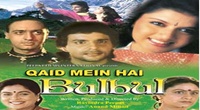
We are Family Full HD Movie Download

Parthale Paravasam Full HD Movie Download
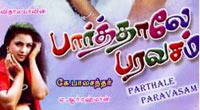
Mate Anidela Lakhe Phaguna Full HD Movie Download
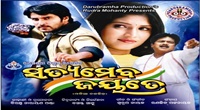
Daku Veera Full HD Movie Download

Asa Mi Tasa Mi Full HD Movie Download
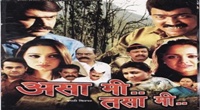
Kempegowda Full HD Movie Download

Har Raat Naya Khiladi Full HD Movie Download
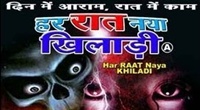
Phoenix The Warrior Full HD Movie Download
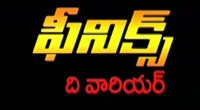
Poochho Mere Dil Se (2004) Full HD Movie Download
.jpg)
Moral Stories Full HD Movie Download
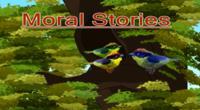
Tenali Raman Full HD Movie Download
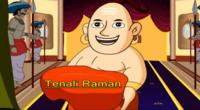
Manchal Nila Full HD Movie Download
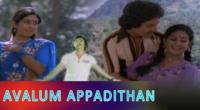
Karthika Deepam Full HD Movie Download
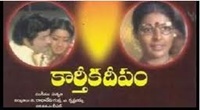
Alajadi Full HD Movie Download
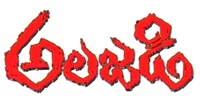
Indru Poi Naalai Vaa Full HD Movie Download
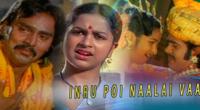
An Evening in Paris Full HD Movie Download
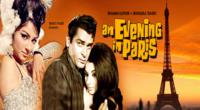
Ladies VS Ricky Bahl Full HD Movie Download

Download latest Movie from bollywood
- 1> baaghi 3
- 2> THE SKY IS PINK MOVIE FULL STORY AND REVIEW
- 3> Luka Chuppi
- 4> TO ALL THE BOYS I’VE LOVED BEFORE
- 5> Kabir Singh
- 6> Street Dancer 3D
- 7> Simmba
- 8> Gone Girl
- 9> The Girl Who Lived
- 10> Ludo
- 11> DILWALE DULHANIA LE JAYENGE
- 12> GUILTY
- 13> The Godfather
- 14> Adventures of Rusty
- 15> Sooryavanshi
- 16> Satyameva Jayate 2
- 17> Thappad
- 18> Bhool Bhulaiyaa 2
- 19> KGFChapter 2
- 20> Mardaani 2
- 21> Pinjar
- 22> Shivaji maharaj
- 23> Ek Villian 2
- 24> Hungama 2
- 25> Divergent
- 26> Mumbai Saga
- 27> The Internship
- 28> HIT (telugu)
- 29> Panga
- 30> The perfect date
- 31> 16 December
- 32> Gopala Gopala (Telugu)
- 33> Brahmastra
- 34> Gangubai Kathiawadi
- 35> Manmadhudu
- 36> Nenu local
- 37> Mahanati
- 38> Shatamanam bavathi
- 39> Lagaan
- 40> After
- 41> MOM
- 42> Shamshera
- 43> Raguvaran BTech
- 44> Khakee
- 45> The villain
- 46> OM
- 47> Mr. perfect
- 48> Bueatifull mind
- 49> Hichki
- 50> Gabbar Singh
- 51> Jogi
- 52> Before Sunrise
- 53> Before Sunset
- 54> Before Midnight
- 55> The Big Bull
- 56> Top Gun: Maverick
- 57> The Purge
- 58> The Sky is Pink
- 59> Laxmmi Bomb
- 60> Sadak 2
- 61> Sufna
- 62> Prithviraj
- 63> PK
- 64> Coolie No 1(2020)
- 65> Black Widow
- 66> Dear Zindagi
- 67> Dil Bechara
- 68> PHIR HERA PHERI
- 69> WAR
- 70> Dostana
- 71> RRR: Roudram Ranam Rudhiram
- 72> Maidan
- 73> Dabbang 3
- 74> Chhalaang
- 75> life as we know it
- 76> SherShaah
- 77> Sandeep Aur Pinky Faraar
- 78> Event Horizon
- 79> 83
- 80> Radhe: Your Most Wanted Bhai
- 81> Gunjan Saxena: The Kargil Girl
- 82> Mr India
- 83> Vivah
- 84> Anokha Bandhan
- 85> Ghost
- 86> Bhoot: Part One - The Haunted Ship
- 87> Haseen Dilruba
- 88> Laal Singh Chaddha
- 89> Qismat
- 90> Rajput
- 91> Drive
- 92> Dil Chahta Hai
- 93> Dil Ki Baazi
- 94> Dil Ka Rishta
- 95> Teesri Manzil
- 96> Dil
- 97> Love Aaj Kal
- 98> Khaali Peeli
- 99> Bunty Aur Babli 2
- 100> Atrangi Re
- 101> Gulabo Sitabo
- 102> Jodi
- 103> Suraj Pe Mangal Bhari
- 104> Deewana
- 105> Attack
- 106> Sardar Udham Singh
- 107> Toofan
- 108> THE LOVEBIRDS
- 109> Jersey
- 110> Ginny Weds Sunny
- 111> Thalaivi
- 112> Shiddat
- 113> Angels vs Zombies
- 114> Koi Mil Gya
- 115> Thank God
- 116> Bhuj: The Pride of India
- 117> Hum Aapke Hain Kaun
- 118> The Platform
- 119> Bird Box
- 120> Roohi Afzana
- 121> Torbaaz
- 122> Nikamma
- 123> World War Z
- 124> Extraction
- 125> Train to Busan
- 126> Life of Pi
- 127> SHAADI MEIN JROOR AANA
- 128> Himmat Aur Mehnat
- 129> To All The Boys: P.S. I Still Love You
- 130> Mimi
- 131> Good Newwz
- 132> Shubh Mangal Zyada Saavdhan
- 133> Raabta
- 134> Harry Potter and the Philosopher's Stone
- 135> Harry Potter and the Chamber of Secrets
- 136> Chhapaak
- 137> War of the Worlds
- 138> Harry Potter and the Prisoner of Azkaban
- 139> Harry Potter and the Goblet of Fire
- 140> MURDER MYSTERY
- 141> Shakuntala Devi
- 142> Bachchan Pandey
- 143> Jayeshbhai Jordar
- 144> Sheer Qorma
- 145> Saina
- 146> 'O' Pushpa I hate tears
- 147> Kedarnath
- 148> MS Dhoni The Untold Story
- 149> Chhichhore
- 150> Badhaai Ho
- 151> Unstoppable
- 152> Oz the Great And Powerful
- 153> The Girl on the Train
- 154> Haathi Mere Saathi 2020
- 155> The Conjuring: The Devil Made Me Do It
- 156> Gandhi Se Pehle Gandhi
- 157> The Song of Scorpions
- 158> Srimanthudu
- 159> Hello Guru Prema Kosame
- 160> Beauty and The Beast
- 161> Black Panther
- 162> Charlie and the Chocolate Factory
- 163> Bole Chudiyan
- 164> Fidaa
- 165> Duvvada Jagannadham
- 166> Bruce Lee: The Fighter
- 167> Hyper
- 168> Yaara
- 169> Red (2020)
- 170> Shivam
- 171> That Is Mahalakshmi
- 172> Nishabdham
- 173> Aashram 2020 web series
- 174> Laxmii
- 175> Mismatched
- 176> STUDENT OF THE YEAR 2
- 177> NAIL POLISH
- 178> Ramprasad Ki Tehrvi
- 179> KAAGAZ
- 180> 12 o Clock
- 181> The Power
- 182> bolo hau
- 183> Tribhanga
- 184> JAMUN
- 185> Madam Chief Minister
- 186> Maasaab
- 187> Aadhaar
- 188> Tanhaji
- 189> Bhaagi 3
- 190> Bhootnath
- 191> MALANG
- 192> Jai Mummy Di
- 193> Haathi Mere Saathi 2021
- 194> Shakeela
- 195> Unpaused
- 196> Annayya
- 197> Vamsoddharakudu
- 198> Mrugaraju
- 199> Narasimha Naidu
- 200> Sankranti
- 201> Manasu Maata Vinadhu
- 202> Anjaane
- 203> Apaharan
- 204> Bachke Rehna Re Baba
- 205> Bewafaa
- 206> Roohi
- 207> Radhe
- 208> Zindagi Khoobsoorat Hai
- 209> Yeh Mohabbat Hai
- 210> Yeh Kya Ho Raha Hai?
- 211> The Tomorrow War
- 212> DehradunDiary
- 213> Meri Shaadi Karaoo
- 214> Matruu Ki Bijlee Ka Mandola
- 215> No One Killed Jesica
- 216> Aag Ka Goola
- 217> Eight Million Dollars
- 218> Three Hundred
- 219> Cats and Dog
- 220> Decoy
- 221> Gold Rush
- 222> You Have Got Mail
- 223> Final Destination three
- 224> Tofan
- 225> Jungle
